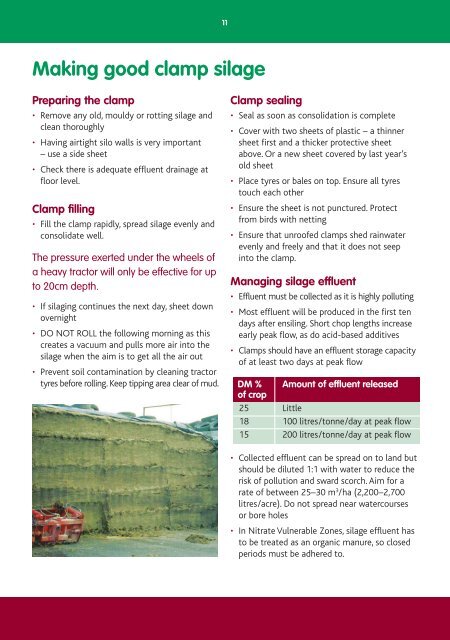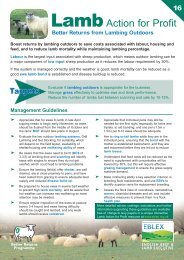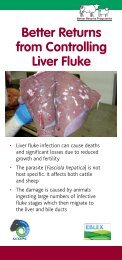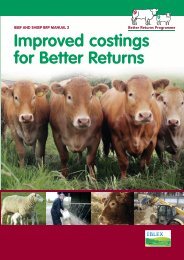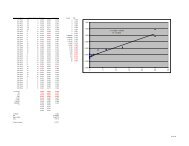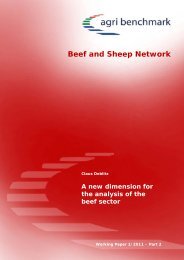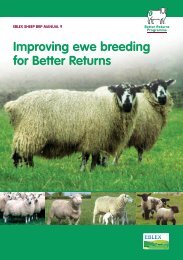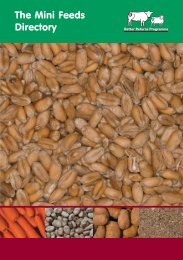Making Grass Silage for Better Returns - Eblex
Making Grass Silage for Better Returns - Eblex
Making Grass Silage for Better Returns - Eblex
You also want an ePaper? Increase the reach of your titles
YUMPU automatically turns print PDFs into web optimized ePapers that Google loves.
<strong>Making</strong> good clamp silage<br />
Preparing the clamp<br />
• Remove any old, mouldy or rotting silage and<br />
clean thoroughly<br />
• Having airtight silo walls is very important<br />
– use a side sheet<br />
• Check there is adequate effluent drainage at<br />
floor level.<br />
Clamp filling<br />
• Fill the clamp rapidly, spread silage evenly and<br />
consolidate well.<br />
The pressure exerted under the wheels of<br />
a heavy tractor will only be effective <strong>for</strong> up<br />
to 20cm depth.<br />
• If silaging continues the next day, sheet down<br />
overnight<br />
• DO NOT ROLL the following morning as this<br />
creates a vacuum and pulls more air into the<br />
silage when the aim is to get all the air out<br />
• Prevent soil contamination by cleaning tractor<br />
tyres be<strong>for</strong>e rolling. Keep tipping area clear of mud.<br />
11<br />
Clamp sealing<br />
• Seal as soon as consolidation is complete<br />
• Cover with two sheets of plastic – a thinner<br />
sheet first and a thicker protective sheet<br />
above. Or a new sheet covered by last year’s<br />
old sheet<br />
• Place tyres or bales on top. Ensure all tyres<br />
touch each other<br />
• Ensure the sheet is not punctured. Protect<br />
from birds with netting<br />
• Ensure that unroofed clamps shed rainwater<br />
evenly and freely and that it does not seep<br />
into the clamp.<br />
Managing silage effluent<br />
• Effluent must be collected as it is highly polluting<br />
• Most effluent will be produced in the first ten<br />
days after ensiling. Short chop lengths increase<br />
early peak flow, as do acid-based additives<br />
• Clamps should have an effluent storage capacity<br />
of at least two days at peak flow<br />
DM % Amount of effluent released<br />
of crop<br />
25 Little<br />
18 100 litres/tonne/day at peak flow<br />
15 200 litres/tonne/day at peak flow<br />
• Collected effluent can be spread on to land but<br />
should be diluted 1:1 with water to reduce the<br />
risk of pollution and sward scorch. Aim <strong>for</strong> a<br />
rate of between 25–30 m3 /ha (2,200–2,700<br />
litres/acre). Do not spread near watercourses<br />
or bore holes<br />
• In Nitrate Vulnerable Zones, silage effluent has<br />
to be treated as an organic manure, so closed<br />
periods must be adhered to.


